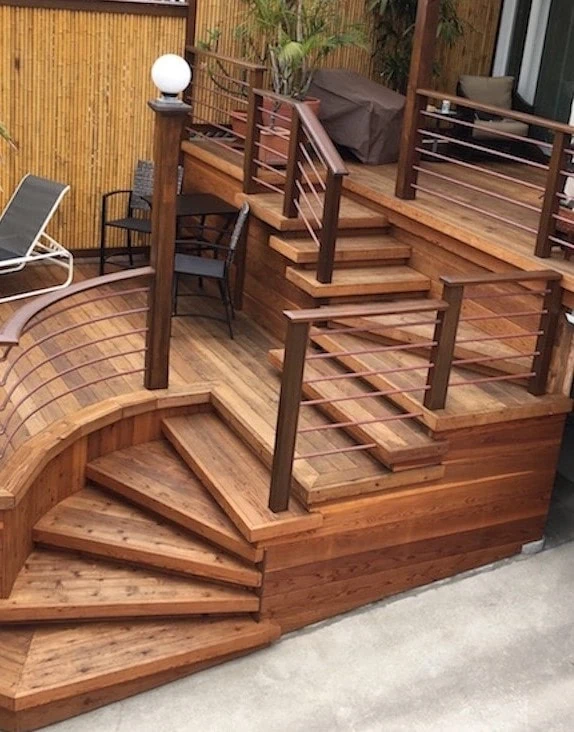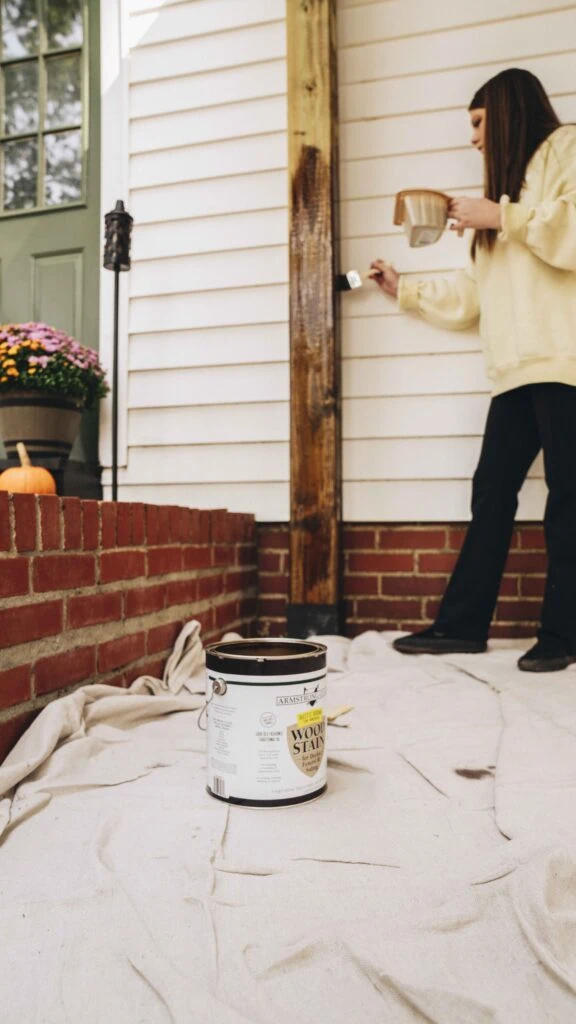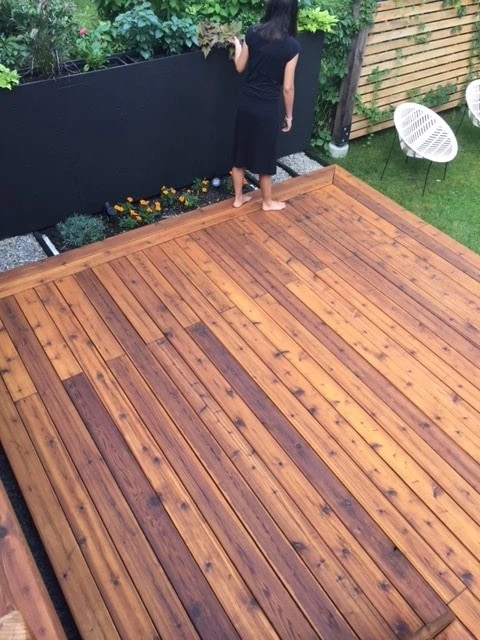Having lived for a little over half a century, some of us have seen things change and products evolve. Jake Clark, the current CEO and original president of Armstrong-Clark recalls “When I was a child, lead based paint was still available. I can remember my grandfather painting his house with lead-based paint and the paint lasted for thirty years.” Today, lead based paint is a thing of the past and has been replaced by more environmentally friendly products, however, at a cost. The new environmentally friendly products rarely last as long as their original counterparts. Consider latex paint versus lead-based paint and how long each can withstand the demands of Mother Nature.
Today, there are some innovative companies that have been able to bridge the gap between environmentally friendly and long-lasting durability. Specializing in stains and penetrating oils, Armstrong-Clark is one of these forward-thinking companies. Historically, an oil-based stain with drying agents would be applied to dry wood, whether that be a deck, fence, or roof. Over time, the result of applying dry on dry was that the wood turned gray and would cup. How many of us have had to replace boards in our deck or entire sections in wood privacy fences as the result of the wood, if not properly treated, deteriorating with time?
Jake Clark grew up in the stain industry climbing the tanks of the Flood Company (manufacturer of CWF stain) and then spent over a decade restoring wooden shake roofs in a number of locations across the United States. Clark eventually partnered with Jim Armstrong, who supplied him with roof coatings, to develop a product that not only protected the wood from the elements but that also contained non-drying oils to help preserve the wood from the inside out. Eventually, Clark bought out Armstrong in the early 2000’s and has been steadily working to grow this company from a regional, West Coast, name to a national brand.
According to Clark, their products contain both drying oils and non-drying oils. Wood is a naturally porous material much like a person’s skin. Without oils that penetrate the skin, the skin will become dry and crack when it’s exposed to Mother Nature. How many of us have walked on the beach and gotten sunburned and our lips have gotten wind chapped? The stains manufactured by Armstrong-Clark work much like moisturizing sunscreen. Drying oils offer UV protection on the surface of the wood by creating a barrier (not a film) that locks in the non-drying penetrating oils that seep down into the wood to revitalize and nourish the interior wood fiber. This helps to preserve the wood just as applying hand lotion helps to keep your skin from drying out and cracking.
The catch to this process is the product must also be environmentally friendly. The Armstrong-Clark products contain less than 100 VOCs. It is produced in California, which mandates some of the most stringent standards in the United States. Their products are one of the most environmentally friendly all-weather stains on the market while still being considered one of the highest quality craftsman stains available.
Aside from the innovative design of penetrating oils and the stringent environmental standards, Armstrong-Clark’s products offer many other advantages. Unlike other products made by competing companies, the Armstrong-Clark products can be applied in direct sunlight and the intense summertime heat without a negative impact on the application process. In addition, if needed the second coat can normally be applied within thirty minutes after the application of the first coat. These products can be applied by brush, roller, stain pad, or sprayer. Clark will tell you that there is no better way to apply any exterior stain than by brush, and that a stain pad is a close second for decks. He puts rollers into the category of “just because you can doesn’t mean you should” because of the higher risks of over application and the fact that they do not do nearly as good of a job working the stain into the wood as the afore mentioned. He also reserves spraying with back brushing for large horizontal projects like fencing and siding. Additionally, the Armstrong-Clark products do not omit an offensive odor like many other toxic smelling products on the market which is really good for those of us with allergies.
As good as the Armstrong-Clark products might be, as with most other things, the tool is only as good as the operator. If Armstrong-Clark’s penetrating oil stains are misapplied or if the correct prep work has not been performed, the result will not be as good, and these mistakes will forfeit much of the benefit of these amazing products.
As with any stain project, it is important that the area to be stained is clean and dry. The biggest problem that Jake Clark often hears about is over application. To clarify, Clark explains over application simply means more stain has been applied than the wood can absorb, and there are many different causes to this “symptom”. One of cause is a “more is better” approach. Unfortunately, wood can only absorb so much stain. A second common cause of over application is sanding with too fine of a sandpaper. Exterior wood should never be sanded with anything finer (higher) than 80 grit when using a penetrating oil. Sanding with finer grits close the pores of the wood. A third cause is applying stain to wood too soon after installation. Wood has several attributes that inhibit an oil’s ability to penetrate, including its own natural oil still in the wood, mill glaze, pressure treating chemicals (in PT wood), and moisture. Just because wood is kiln dried does not mean it is ready to stain as it still has other inhibiting attributes.
The best way to determine if new wood is ready to stain is to dip your fingers into a glass of water and shake off a few droplets so that they only fall a short distance and do not splatter when they hit the surface of the wood. The wood is ready to accept stain when the droplets spread out and soak into the wood within 2 minutes. Test once a month until test passes. This test does not work on exotic hardwoods, and depending on the species of wood it may take two to six months to pass this test.
Mold and mildew are the two most common issues that must be addressed before staining exterior wood. The good news is that most mold and mildew issues can be solved with some household bleach, water, liquid dish soap, and a garden sprayer. You need to be careful when using bleach as you do not want it sitting on the surface of your wood more than twenty minutes. More serious mold issues will require mixing Jomax with bleach and water, using hydrogen peroxide, or even a stripper to remedy the problem. Sometimes tannin, rust, and prior applications of another brand of stain need to be dealt with. However, bleach does not help with tannins or rust stains. In the cases of tannin and rust a cleaner brightener is needed. Also, if a stripper is used then a brightener must follow to balance out the pH on the surface of the wood to better take an applied stain. Lastly, fuzzing/ furring resulting from using too much pressure with a pressure washer, scrubbing too hard or using too stiff of a bristle on a brush, using chemicals that are too strong or are left to dwell on the surface too long, must be sanded off before applying a coat of stain. Sanding with 60 or 80 grit sandpaper is used to remedy these problems. Typically, you want to use a deck brush or truck brush that has bristles with some flex to prevent this from happening.
As previously noted, brushing provides a more effective coat (think penetration) than does rolling or spraying. However, very large areas, like a giant multi-level party deck, will take too long to brush by hand so using a stain pad would be a better option. Jake Clark recommends a stain pad over a roller because rollers spin and only present stain to the surface of the wood whereas a stain pad is fixed and forces the stain down into the wood while wiping away and pushing forward excess sitting on the surface. Even then he recommends dipping the stain pad into a stain tray, blotting out the stain of the pad every 12” to 20” and then back mopping. If any puddles are visible after application walk over and brush them out. After that, if any stain remains on the project after twenty-four hours it can be wiped off with a clean rag.
It is recommended that smaller pieces of the project, such as handrails or decorative accent pieces be stained before being added into the project. It is much easier to stain the underside of a handrail when it’s not attached to anything than to do it after it has been set in place and has a multitude of spindles under it.
As with all products, follow the manufacturer’s guidelines. I know that we are all guys, and we don’t need instructions because we already know how to do it. However, as much as I hate to admit it, every once in a while, our wives are right, and we should read the instructions before we start applying the stain. If you want more help understanding how to prepare and stain you can learn more by visiting www.armclark.com and reading the How-To section. They include a downloadable pdf of their instructional brochure there as well.
One gallon of Armstrong-Clark deck stain will cover approximately 200 square feet on softwood, like Southern yellow pine, and 300-400 square feet on hardwood materials. All that is needed to determine square footage is a simple calculation of length times width and then divide that number by 200 for soft wood or 350 for hardwood to determine the approximate number of gallons required.
The next time you have an outdoor project, do not let all your hard work go to waste by not properly preserving the lumber from the elements. Water and sunlight are slow, brutal, relentless killers of your outdoor wood. Thanks to the innovative people at Armstrong-Clark, homeowners now have a viable defense. Unlike other companies, Armstrong-Clark is not trying to fight Mother Nature with the use of dangerous chemicals and environmentally unfriendly components. Instead, the engineers and scientists at Armstrong Clark have developed a method of working with Mother Nature by utilizing environmentally friendly penetrating oils alongside the more traditional drying oils to, not only protect the wood, but to also preserve for many years to come.
For more information, contact:
Armstrong Clark Company
14949 Camage Ave.
Sonora Ca. 95370
W: Armclark.com
P: 800‑916‑8211
F: 209‑588‑8973







